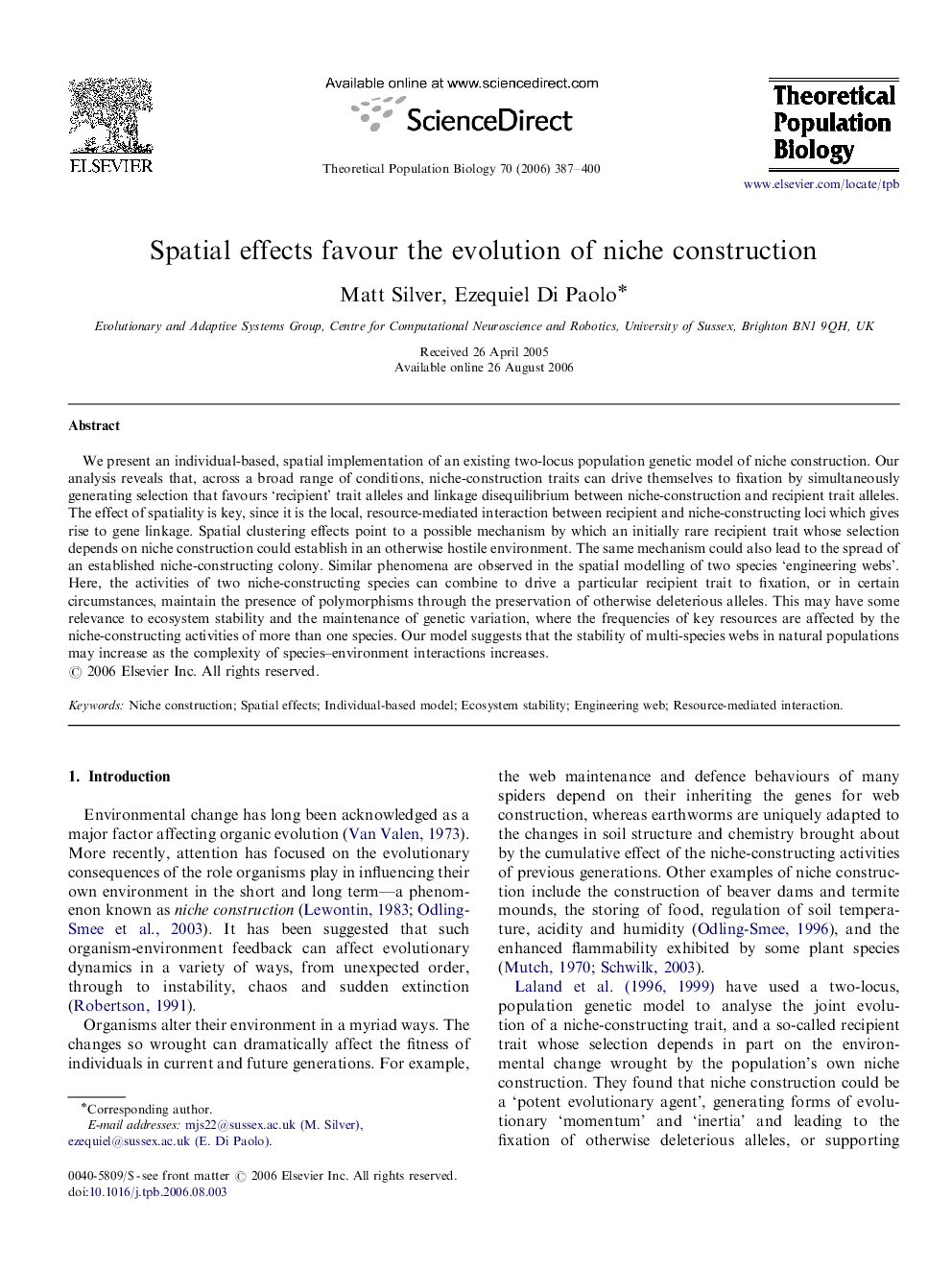| کد مقاله | کد نشریه | سال انتشار | مقاله انگلیسی | نسخه تمام متن |
|---|---|---|---|---|
| 4502855 | 1624173 | 2006 | 14 صفحه PDF | دانلود رایگان |

We present an individual-based, spatial implementation of an existing two-locus population genetic model of niche construction. Our analysis reveals that, across a broad range of conditions, niche-construction traits can drive themselves to fixation by simultaneously generating selection that favours ‘recipient’ trait alleles and linkage disequilibrium between niche-construction and recipient trait alleles. The effect of spatiality is key, since it is the local, resource-mediated interaction between recipient and niche-constructing loci which gives rise to gene linkage. Spatial clustering effects point to a possible mechanism by which an initially rare recipient trait whose selection depends on niche construction could establish in an otherwise hostile environment. The same mechanism could also lead to the spread of an established niche-constructing colony. Similar phenomena are observed in the spatial modelling of two species ‘engineering webs’. Here, the activities of two niche-constructing species can combine to drive a particular recipient trait to fixation, or in certain circumstances, maintain the presence of polymorphisms through the preservation of otherwise deleterious alleles. This may have some relevance to ecosystem stability and the maintenance of genetic variation, where the frequencies of key resources are affected by the niche-constructing activities of more than one species. Our model suggests that the stability of multi-species webs in natural populations may increase as the complexity of species–environment interactions increases.
Journal: Theoretical Population Biology - Volume 70, Issue 4, December 2006, Pages 387–400